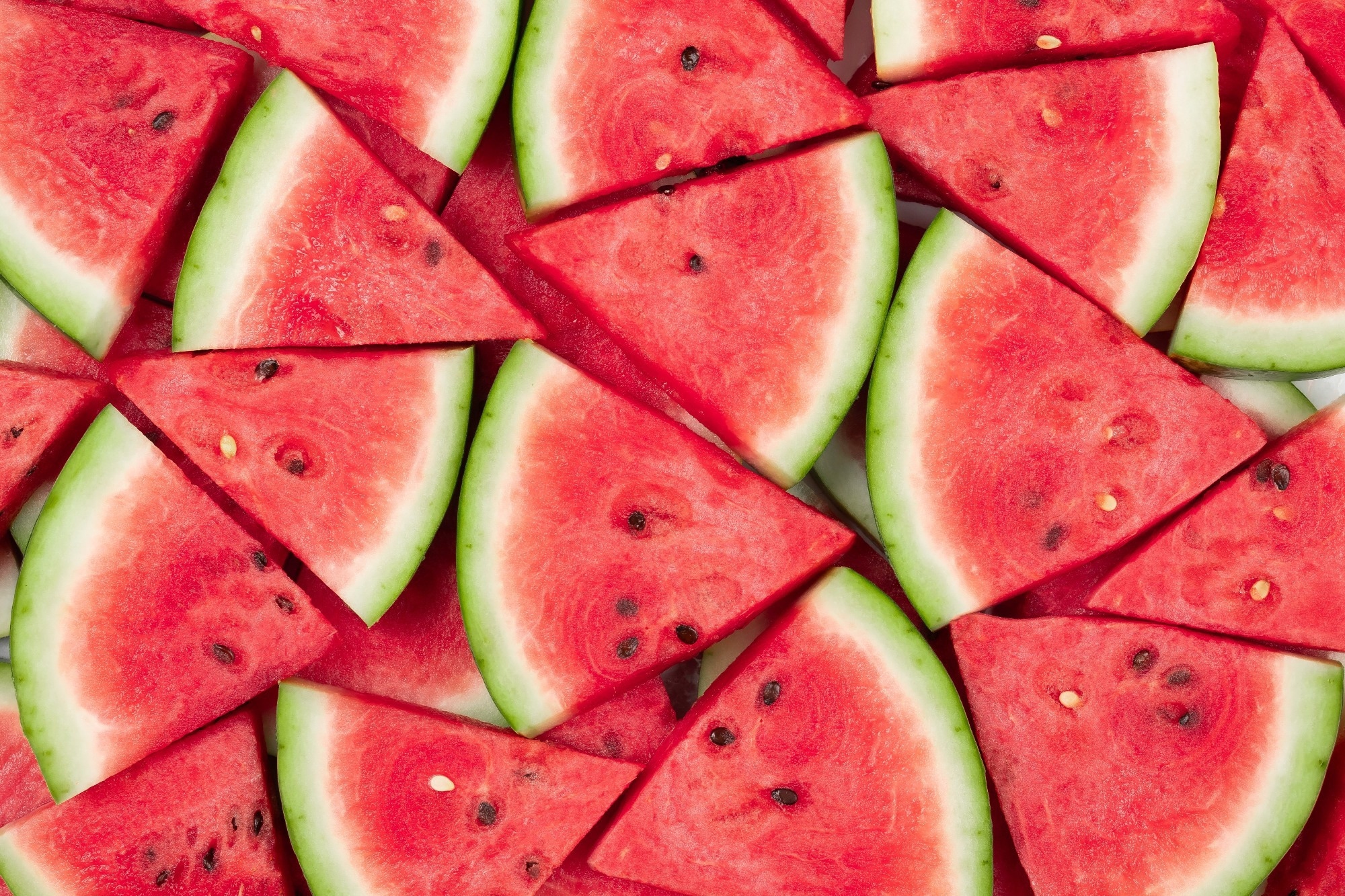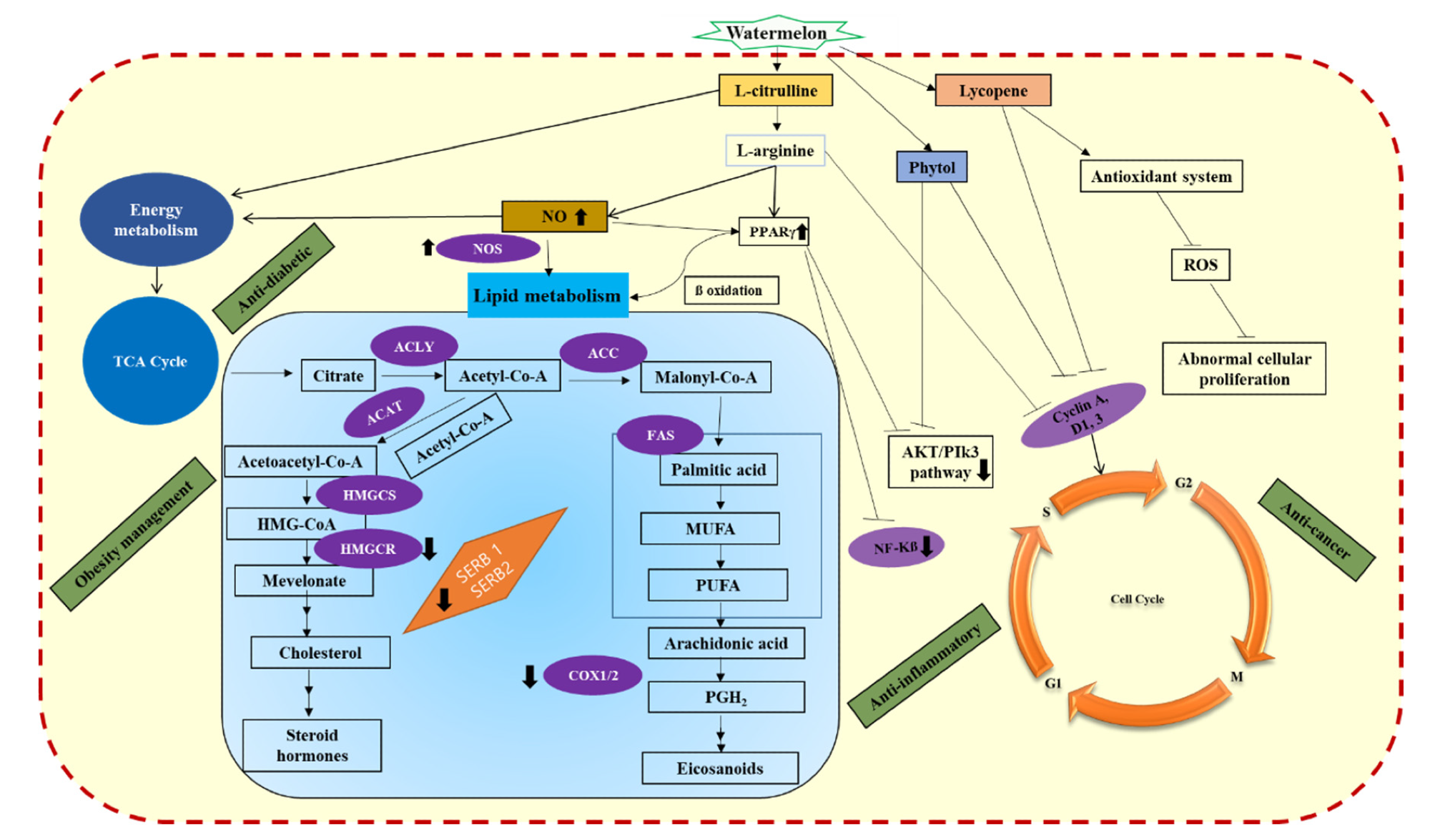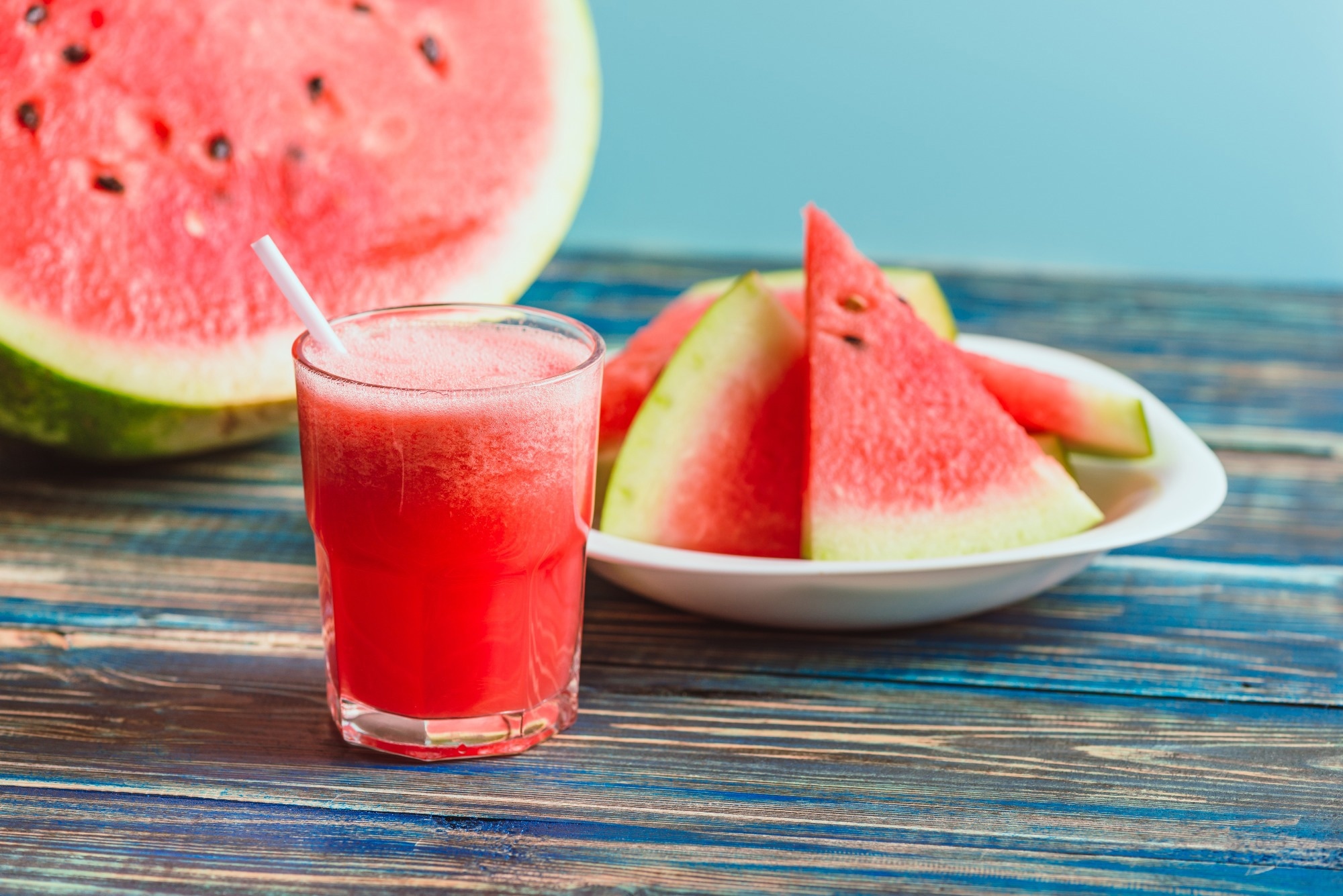Introduction
Phytochemical and nutrient composition
Health benefits supported by evidence
Cardiovascular health
Antioxidant and anti-inflammatory activity
Exercise recovery and performance
Metabolic health
Cancer prevention potential
Bioavailability and metabolism
Limitations and research gaps
Conclusion
References
Further reading
Discover how watermelon’s unique blend of lycopene and citrulline delivers scientifically supported benefits for blood pressure, oxidative stress, and recovery, positioning it as a promising functional food for cardiometabolic wellness.
 Image Credit: A La Gato Studios / Shutterstock.com
Image Credit: A La Gato Studios / Shutterstock.com
Introduction
Watermelon (Citrullus lanatus) is 92% water while simultaneously rich in vitamin C, provitamin A carotenoids, magnesium, and potassium. This nutrient density, coupled with a low caloric load, has sparked increased scientific interest in the bioactive composition of watermelon and its potential benefits, including antioxidant, anti-inflammatory, vascular, metabolic, cognitive, immune, and digestive effects.1,2
Phytochemical and nutrient composition
Watermelon is an excellent source of both hydration and essential nutrients. The flesh of watermelon fruit consists of carbohydrates, as well as vitamins A and C, whereas the rind and seeds are rich in potassium and magnesium for electrolyte and neuromuscular support.3
Lycopene is the dominant carotenoid present in watermelon, with an average concentration of about nine mg/kg. Heat or acidity can convert trans-lycopene into more bioavailable cis-forms, thereby increasing singlet-oxygen quenching by up to 10 times that of α-tocopherol.3
Watermelon is also a rich dietary source of L-citrulline, with concentrations ranging from 0.9 to 5 mg/kg. After absorption, citrulline is converted to L-arginine, which increases endothelial nitric oxide production to support vascular tone and metabolic health. Flavonoids, such as iso-orientin, rutin, and quercetin, can also be found in both the watermelon fruit and rind. These diverse flavonoids contribute to the anti-inflammatory properties of watermelon, as they scavenge reactive oxygen species (ROS) and downregulate cyclo-oxygenase 2 (COX-2).
 A schematic representation of various mechanisms induced by the phytochemicals present in watermelon extracts. The figure has been conceived based on the interpretation of the literatures cited in sections (2-6). ACC, acetyl-coA carboxylase; ACLY, ATP-citrate lyase; COX1/2,cyclooxygenase; Akt, alpha serine-threonine protein kinase; HMGCS, 3-hydroxy-3-methylglutaryl-CoA synthase; HMGCR, 3-hydroxy-3-methylglutaryl-CoA reductase; FAS, fattyacid synthase; MUFA, monounsaturated fatty acid; NO, endogenous nitric oxide; NOS, nitric oxide synthase; PPAR-γ, peroxisome proliferator-activated receptor–γ; PUFA, polyunsaturated fatty acid; PGH2, prostaglandin-H2; ROS, reactive oxygen species, SERB, sterol regulatory element binding proteins; TCA, tricarboxylic acetic acid cycle.3
A schematic representation of various mechanisms induced by the phytochemicals present in watermelon extracts. The figure has been conceived based on the interpretation of the literatures cited in sections (2-6). ACC, acetyl-coA carboxylase; ACLY, ATP-citrate lyase; COX1/2,cyclooxygenase; Akt, alpha serine-threonine protein kinase; HMGCS, 3-hydroxy-3-methylglutaryl-CoA synthase; HMGCR, 3-hydroxy-3-methylglutaryl-CoA reductase; FAS, fattyacid synthase; MUFA, monounsaturated fatty acid; NO, endogenous nitric oxide; NOS, nitric oxide synthase; PPAR-γ, peroxisome proliferator-activated receptor–γ; PUFA, polyunsaturated fatty acid; PGH2, prostaglandin-H2; ROS, reactive oxygen species, SERB, sterol regulatory element binding proteins; TCA, tricarboxylic acetic acid cycle.3
Health benefits supported by evidence
Cardiovascular health
Once absorbed, citrulline is recycled into L-arginine, which increases nitric oxide synthesis, relaxes vascular smooth muscle, and improves endothelial tone. Four weeks of whole-fruit intake has been shown to reduce systolic blood pressure levels and waist-to-hip ratios in overweight adults, whereas an isocaloric cookie snack raised both values. Similar hypotensive effects have been reported in pre-hypertensive study participants who were given watermelon extract, confirming a consistent vasodilatory benefit associated with watermelon.4
Antioxidant and anti-inflammatory activity
In a four-week trial, watermelon reduced lipid peroxidation and raised total antioxidant capacity as compared to individuals who consumed cookies. Animal and in vitro studies corroborate these findings, with lycopene-rich fractions associated with reduced oxidative stress and pro-inflammatory markers.4
Exercise recovery and performance
A single 500 mL dose of citrulline-enriched watermelon juice two hours before a half-marathon reduced muscle soreness for 24-72 hours, maintained jump performance, and led to lower post-race lactate levels than placebo. These ergogenic effects likely reflect nitric oxide-mediated perfusion and faster ammonia clearance, which support both aerobic capacity and recovery.5
Metabolic health
As compared to low-fat cookies, consuming fresh watermelon was associated with stronger satiety for up to two hours, decreased body weight and body mass index (BMI) values, as well as improved lipid profiles after four weeks. Post-prandial glucose and insulin levels remained stable due to the low glycemic load and trace dietary fiber of watermelon.
Cancer prevention potential
Epidemiological and mechanistic data suggest that lycopene reduces the risk of prostate and other cancers. Both the lycopene and secondary antioxidants present in watermelon have successfully inhibited oxidative DNA damage and modulated inflammatory pathways that precede carcinogenesis. In vitro, lycopene induces apoptosis and cell cycle arrest in prostate carcinoma cells, thereby providing a plausible molecular basis for these associations.6
11 Healthy Benefits of Watermelon | The Foodie
Bioavailability and metabolism
In human epithelial colorectal adenocarcinoma (Caco-2) assays, 30-37% of citrulline from watermelon crossed the intestinal barrier within one hour. Human data indicate that plasma levels of citrulline peak between one and two hours after ingestion, after which citrulline is converted to arginine within the nitric-oxide pathway.
Unpasteurized juice provides more bioavailable citrulline than pasteurized juice or the isolated amino acid. Hydrothermal treatment of watermelon rind does not interfere with its antioxidant capacity, which reflects the thermal resilience of citrulline-rich extracts. Moreover, super-critical carbon dioxide (CO₂) extraction concentrates lycopene into a readily absorbed fraction that retains anticancer activity.7
Overall, gentle juicing and controlled heating maximize the stability and bioavailability of lycopene and citrulline in watermelon, thereby strengthening their vascular and antioxidant benefits.7
Limitations and research gaps
Phytochemical profiles vary among cultivars and change with soil, climate, and post-harvest handling, making it challenging to compare results between studies. To date, most human trials have been small, short, or single-center studies; therefore, their findings cannot be used to predict long-term cardiometabolic or cancer outcomes with confidence.
Dosage, formulation, and intervention protocols vary widely, ranging from raw fruit to concentrated extracts, which prevents meta-analysis and the development of regulatory guidance. Thus, harmonized agricultural analytics, multicenter longitudinal studies, and consensus trial designs are crucial before the bioactive properties of watermelon can be translated into precise dietary recommendations for global nutrition policy and functional food innovation.9
 Image Credit: Lee Key / Shutterstock.com
Image Credit: Lee Key / Shutterstock.com
Conclusions
Watermelon is rich in both lycopene and L-citrulline, which consistently lower oxidative stress, improve endothelial function, maintain healthy blood pressure levels, enhance exercise recovery, and support weight management. The convergence of antioxidant, vascular, metabolic, and performance benefits supports considering watermelon as a functional food with therapeutic promise for cardiometabolic health.
Translational priorities must include large, multi-ethnic, dose-controlled trials, standardized cultivar profiling, and real-world dietary integration studies to define evidence-based portion sizes and develop precise public-health recommendations for global chronic disease prevention.
References
- Nissar, J., Sidiqi, U. S., Dar, A. H., & Akbar, U. (2025). Nutritional composition and bioactive potential of watermelon seeds: a pathway to sustainable food and health innovation. Sustainable Food Technology, 3(2), 375-395. DOI: 10.1039/d4fb00335g. https://www.sciencedirect.com/science/article/pii/S2753809525000158
- Fulgoni, K., & Fulgoni, V. L. (2022). Watermelon intake is associated with increased nutrient intake and higher dietary quality in adults and children, as indicated by NHANES 2003–2018. Nutrients, 14(22). DOI: 10.3390/nu14224883, https://www.mdpi.com/2072-6643/14/22/4883
- Manivannan, A., Lee, E. S., Han, K., Lee, H. E., & Kim, D. S. (2020). Versatile nutraceutical potentials of watermelon—A modest fruit loaded with pharmaceutically valuable phytochemicals. Molecules, 25(22). DOI: 10.3390/molecules25225258, https://www.mdpi.com/1420-3049/25/22/5258
- Volino-Souza, M., Oliveira, G. V. D., Conte-Junior, C. A., Figueroa, A., & Alvares, T. S. (2022). Current evidence of watermelon (Citrullus lanatus) ingestion on vascular health: a food science and technology perspective. Nutrients, 14(14). DOI: 10.3390/nu14142913, https://www.mdpi.com/2072-6643/14/14/2913
- Martínez-Sánchez, A., Ramos-Campo, D. J., Fernández-Lobato, B., Rubio-Arias, J. A., Alacid, F., & Aguayo, E. (2017). Biochemical, physiological, and performance response of a functional watermelon juice enriched in L-citrulline during a half-marathon race. Food & Nutrition Research, 61. DOI: 10.1080/16546628.2017.1330098, https://foodandnutritionresearch.net/index.php/fnr/article/view/1203
- Lum, T., Connolly, M., Marx, A., Beidler, J., Hooshmand, S., Kern, M., Liu, C. and Hong, M.Y. (2019). Effects of fresh watermelon consumption on the acute satiety response and cardiometabolic risk factors in overweight and obese adults. Nutrients, 11(3). DOI: 10.3390/nu11030595, https://www.mdpi.com/2072-6643/11/3/595
- Gu, I., Balogun, O., Brownmiller, C., Kang, H. W., & Lee, S. O. (2023). Bioavailability of citrulline in watermelon flesh, rind, and skin using a human intestinal epithelial Caco-2 cell model. Applied Sciences, 13(8). DOI: 10.3390/app13084882, https://www.mdpi.com/2076-3417/13/8/4882
- Hewawasam, S. P., Iacovou, M., Muir, J. G., & Gibson, P. R. (2018). Dietary practices and FODMAPs in South Asia: applicability of the low FODMAP diet to patients with irritable bowel syndrome. Journal of gastroenterology and hepatology, 33(2), 365-374. DOI: 10.1111/jgh.13885, https://onlinelibrary.wiley.com/doi/10.1111/jgh.13885
- Hossain, M. S., Wazed, M. A., Asha, S., Amin, M. R., & Shimul, I. M. (2025). Dietary phytochemicals in health and disease: mechanisms, clinical evidence, and applications—A comprehensive review. Food Science & Nutrition, 13(3). DOI: 10.1002/fsn3.70101, https://onlinelibrary.wiley.com/doi/10.1002/fsn3.70101
Last Updated: Jul 21, 2025